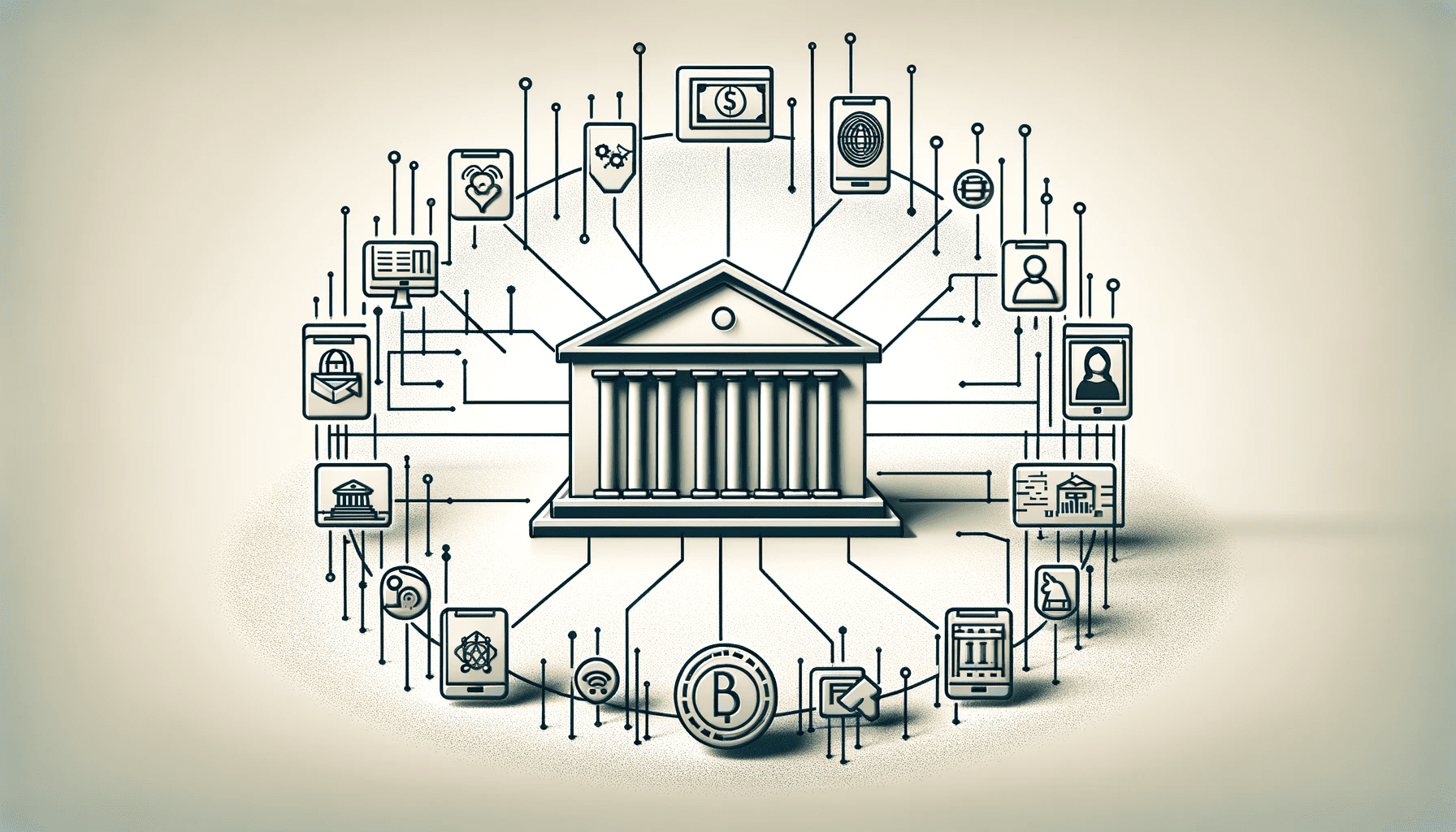Online banking has had the most profound effect on the banking sector over the last decade. The rate of change is accelerating, and is changing the whole customer experience.
In 2023, automation of the customer interface and the application of advanced technologies like Artificial Intelligence and Machine Learning are going to be helping users to receive answers to their queries much faster and more efficiently without human intervention on the bank’s side. Clients will now expect to locate all of their relevant information much faster and be able to initiate the full range of transactions in real-time, 24/7, directly from their mobile banking application. Both financial service providers and customers must keep abreast of the impact that these changes are going to have over the coming year.
At Money-Gate, we have worked with leading-edge financial institutions and customers in the digital banking, online gaming and cryptocurrency sectors for over 14 years. Whatever your needs or problems are when you are faced with this explosion in the depth and range of corporate banking and financial services, we have the expertise and knowledge to guide you through every step that you need to keep ahead of the changes.
Expected trends for financial service providers in 2023
We expect that the core banking trends in 2023 for participants in the banking industry will come from the profound impact of technological innovation. Until recently, much attention has been paid to overhauling the legacy processes in order to be able to meet changing customer requirements. Now, for most advanced banks, the focus will shift to maximising profitability in order to improve RoI as financial institutions are dealing with a difficult economic picture.
General economic instability brought on by high inflation and the forecast of recession in major economies is pushing banks to put a new focus on innovation as a means of improving returns. The prospects for overall revenue growth are receding in the medium term, so financial institutions are looking for savings from efficiency initiatives derived from advanced digital technology.
One way this will be achieved is by developing super-power applications offering full cross-platform features and functionality.
Expected trends for customer demands from financial service providers in 2023
The introduction of chatbots and humanoid robots is likely to revolutionise the financial services sector in 2023. Banks are deploying this technology as the first step to taking customer interactions into a wholly automated space. This will facilitate instant transactions, being able to offer individualised products and services full-time, and to shift away from the street-level banking scenario completely.
Reforming the concept of money
Blockchain has brought a quiet revolution for businesses, quite separate from the image bitcoin introduced of a highly speculative and unstable platform. Blockchain for business is changing some traditional business concepts, with processes like peer-to-peer transactions, digital transactions and settlement of trade and digital payments, eliminating intermediaries and accelerating the underlying processes. Blockchain technology will introduce substantial operating cost savings as more banks and financial institutions engage fully.
Digital Transformation
Digitization and the introduction of advanced technologies is both improving the banking sector’s operational efficiency, and delivering superior customer experiences through self-service digital channels on mobile and online banking channels.
Digital banking trends in 2023 will allow banks to shift increasingly from face-to-face actions to fully digitised services. Banks will be offering advanced targeted service on a whole range of new devices that duplicate the functionality of smartphones but are more user-friendly and portable.
Fintech companies will become increasingly associated with traditional banks.
Many traditional banks will need to exploit the opportunities of the financial services trends in 2023 presented by digital evolution. Because they have already fallen behind the more advanced offerings of Fintech service providers, the movement will be either to spend considerable time and money to develop their own equivalents by expanding their systems in-house or by partnering with established Fintech companies that can slot into the gaps. Until now, Fintech companies were seen as competitors that only took advantage of the gaps that were due to the traditional banking industry’s failure to catch up with technological developments.
In future, partnerships between banks and established Fintech institutions will become more common. These partnerships will fundamentally reshape the financial services sector. Fintechs can provide banks with established and proven tech-enabled banking services. At the same time, the association offers Fintechs access to much broader customer bases and improves their image of security and stability.
In an opposite trend, Fintech service providers can also choose to become more directly competitive with standard banking operators. Neobanks, also known as digital-only banks, can offer some of the same services as traditional banks without any face-to-face interface. Customers use simple online interfaces to perform their transactions and rarely require communication with bank personnel. In this mode, Neobanks represent the leading edge of the mobile banking trends in 2023.
Neobanks benefit from lower startup costs, improved reaction times in transactions for customers, and lower charges. These institutions can operate with considerably lower cost structures and pass these savings to customers, in the form of lower transaction fees or higher interest on their savings.
Building up the customer’s banking experience in 2023
In 2023 and beyond, one of the main driving forces for change impacting the banking and financial services industries will be the need to meet customer experience expectations. The main aspects of this open banking trend in 2023 and beyond are the need for financial institutions to provide an omnichannel banking experience, which means that customers can move seamlessly between their actions (mobile, online or face-to-face) without needing to initialize the action each time.
For this to work, it is essential that the user experience can be personalized, with the interactions being based on knowledge of the customer’s needs and past experiences and requirements. Personalizing means that the customer will build a deeper relationship with their bank and be less inclined to shop around in the highly competitive market. To provide a fully personalized experience, the bank needs comprehensive and up-to-date data on which it can apply the powers of Artificial Intelligence and Machine Learning.
This power will generate insights that help understand customer needs better and offer targeted marketing of products and services.
Open banking trends in 2023
In general, banks and financial institutions can select from an extensive range of technologies without having to invest considerable time and money. As part of the more significant trend towards Software as a Service (SaaS) replacing in-house application development, the movement inside the financial sector is towards open banking.
Financial institutions can add new abilities to customers by opening up their own applications to third-party application programming interfaces (APIs) that provide new services. Expanding to these open banking trends in 2023 will allow banks to collaborate with Fintechs and not to compete with them. Open banking allows for cooperation with third-party payment and other service providers to share access to customers’ data between banks and financial institutions in a fully secure environment.
FAQ
What are the latest trends in banking for 2023?
Focus in the banking and financial services industry is turning toward future innovation that will be increasingly driven by technology. Some key trends driving these innovations are a collaboration with FinTech, ongoing digital transformation, and the increasing role of AI and robotics. As customer demands and lifestyles change, institutions should redefine themselves in terms of becoming agile technology users.
What is the future technology in banking?
New technologies like artificial intelligence (AI), blockchain, and Internet of Things (IoT) will have a growing impact on banking through 2025.
There are many potential future technologies that could be used in the banking industry. Some examples include:
- Artificial intelligence (AI) and machine learning: These technologies could be used to improve fraud detection, customer service, and financial analysis.
- Blockchain: This technology could be used to securely and transparently track financial transactions and reduce the need for intermediaries.
- Biometrics: Banking institutions may use biometric technology, such as fingerprint or facial recognition, to increase security and reduce the need for passwords.
- Mobile payments: The use of mobile phones to make financial transactions, such as payments or transfers, is expected to continue to grow in popularity.
- Virtual and augmented reality: These technologies could be used for training, customer service, and marketing in the banking industry.
- Internet of Things (IoT): The integration of sensors and other devices into the banking system could enable new ways of managing and tracking financial assets.
Overall, the use of technology in the banking industry is expected to continue to evolve and expand, leading to increased efficiency and convenience for customers.
What technology banking trends for 2023 are affecting banking?
As banks consider to set their priorities for 2023, predictive AI, robotic services and consumer’s growing demand to pay for digital services and goods in the metaverse are among the top bank technology trends 2023 for financial institutions.
What is a Valyuz account?
A Valyuz (AKA internet-only bank, online bank, digital bank or virtual bank) is a financial institution provider that operates purely through online interfaces, without physical branches or face-to-face customer interactions.









